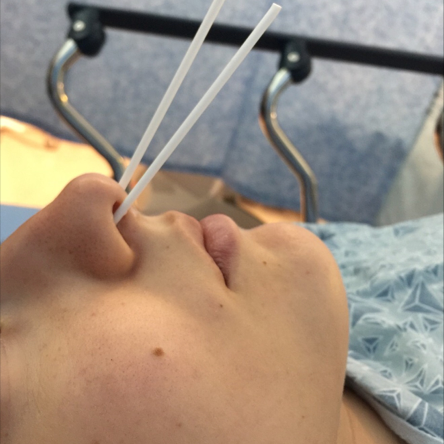We hope you will find this content helpful in your quest for exposure and knowledge regarding the vast array of techniques available for analgesia and assessment procedures using ultrasound imagery. This website is intended to enhance your ability to understand concepts, familiarize yourself with the risks and benefits of ultrasound guidance, regional anesthesia and gain knowledge regarding placement and management of peripheral nerve blocks and other procedures discussed within. It is also important to understand the following:
Viewing this content is in no way a replacement for formalized training nor is it intended to treat or diagnose any disease.
This material is for reference purposes only, and in no way holds Twin Oaks Anesthesia liable for any provider patient care actions.
The information, graphics, videos and content on this website are the sole property of Twin Oaks Anesthesia and may not be duplicated, reproduced or altered in any way.
We strongly encourage providers to take a course from Twin Oaks Anesthesia to more formally expose you to the fundamentals, relevant literature, and details of each procedure we have summarized for you on this website.
Interscalene Nerve block
Interscalene blocks using the nerve stimulator are probably the most technically difficult to perform. The anatomy in the region of the brachial plexus in the neck is complex and redundant tissue can make landmark identification difficult. Complications are many, and studies report success rates of only 75-80%.
PECs Nerve Block
Until recently, patients having anterior chest procedures involving the pectoral muscles such as breast reconstruction had only two regional anesthetic choices for intraoperative and postoperative pain control. These included the thoracic epidural and, more commonly the thoracic paravertebral block. Since many of these reconstructive cases are done on an outpatient basis, the epidural approach is considerably less desirable and may pose significant risk to the patient.
Saphenous Nerve Block
The saphenous nerve block is a useful adjunct to the variety of sciatic blocks that are described. It covers the strip of innervation along the medial portion of the calf. The saphenous nerve is a terminal portion of the femoral nerve. It is purely sensory in nature. The motor innervation of the lower leg is primarily produced by the distal branches of the sciatic nerve. The saphenous nerve branches from the larger femoral nerve about half the distance of the femurs total length.
Popliteal Nerve Block
The “popliteal nerve” is the extension of the mid- sciatic nerve. But this term is a bit of a misnomer. Although the name does describe its anatomic placement in the popliteal fossa, the sciatic nerve has already bifurcated into its respective distal branches relative to the popliteal artery and vein. According to Frank Netter MD, the sciatic nerve, keeps its name deep within the muscles of the posterior leg giving rise to the common peroneal nerve laterally, and the tibial nerve medially.
TAP Nerve Block
As recently as 2001, a novel approach to blocking the afferent nerve fibers to the abdominal wall was discovered. This technique is termed the transverse abdominal plane (TAP) block, and employed placing local anesthetic between the deepest two layers of the abdominal musculature. Analgesia would cover the entire anterior abdominal wall, making it a suitable alternative to epidural placement for any procedure that interrupts the abdomen.
TTE
The purpose of this content is to introduce you, the critical care provider, to the basic and introductory techniques of bedside TTE. It should be noted that this is not an all inclusive TTE presentation, nor does it certify you to perform it. It is meant to be an awakening of your potential in delivering critical care, provide you insights into bedside echo and promote further study and skill enhancement.
Difficult IV Access With Ultrasound
Venous cannulation is made easier by ultrasound in patients whose veins are difficult to see. There are a variety of patient populations that require advanced IV assistance, often, obese patients that are in renal failure. Many of these patients have only a selective area that is available for IV cannulation due to surgical stipulations or previous graft sites. Having an idea where to place a probe will make hunting for a proper vein quicker.
Sphenopalatine Block
The sphenopalatine (SPG) block is not a new technique, but has recently gained interest in the anesthesia community. SPG block was first described by Dr. Greenfield Sluder in 1908. So for more than a century this technique has been known to be effective for various indications.
Erector Spinea Block
As surgeries of the trunk, from thoracotomy to plastics procedures or the chest and abdomen , are on the rise, as is the need for pain control for these areas. For decades thoracic and lumbar epidural techniques seemed to offer the only viable solution. However their drawbacks and limitations often make them unsuitable or simply too risky for anesthesia providers to employ.
Introduction to Gastric Ultrasound
If you’re ready to dive into basic gastric ultrasound for the determination of prandial status, here’s a great start. In our stay and subsequent publication in Anesthesiology News, we were able to take a large cohort of SRNAs from a 30% recognition rate to a 96% correct recognition rate of full stomach, in well under a single hour of presentation.
Ultrasound-Guided INTRAPEC Injection
Regional anesthetic techniques for plastic surgery present a particular set of challenges for anesthesia providers. Two recognized issues are the complex, wide, and sometimes not well described pain generators from the extensive areas involved with plastics procedures and the risk of LAST (local anesthetic systemic toxicity). The latter is arguably the result of additional doses of local anesthetics administered by surgeons in the form of tumescent fluid.
Cervical Plexus Block
The cervical plexus block is probably most often associated with analgesia for carotid endarterectomy surgery. However, its utility branches into other procedures as well. It has been cited in recent literature as being useful in clavicle, airway, thyroid and submandibular surgeries, as well as neck dissections.





